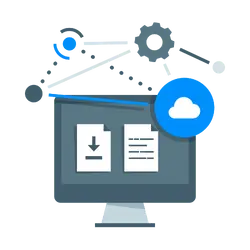The government is currently testing using the Global Navigation Satellite System (GNSS) in order to collect tolls for two of the national highways and the The Union Minister Nitin Gadkari stated in a letter to the Rajya Sabha on Wednesday. These pilot projects comprise the Bengaluru Mysore National Highway (NH-275) located in Karnataka and the Panipat Hisar National Highway (NH-709) located in Haryana. In the beginning, the use of GNSS for Electronic Toll Collection (ETC) will be implemented alongside the current FASTag system. The hybrid model will combine RFID-based ETC as well as GNSS-based.

What is GNSS Based Toll collection? The new GNSS-based toll collection technique is superior to the existing FASTag system. The dedicated GNSS Lanes will soon be added at the toll points, which allows vehicles that are equipped with the GNSS-based ETC to move through without hassle. The lanes will be converted into GNSS as time passes. The new approach is based upon the distance they travel instead of fixed locations for tolls in order to give free tolling, minimize leaks and tax evasion.
GNS vs. FASTag The technology used:
- FASTag The system FASTag utilizes the Radio Frequency Identification (RFID) technology that allows a tag to be affixed to the windshield of a car is scann by sensors at points of entry to take the cost of tolls in a timely manner.
- GPS: This system uses techniques for navigation with satellites like GPS, the Global Positioning System (GPS) as well as the Indian GPS Aided GEO Augmented Navigation (GAGAN) which allows you to track vehicles and calculate tolls in relation to the distance they travel.
Payment Calculation
- FASTag Fees for tolls are set at specific toll stations. Once a vehicle has passed at a toll point and the amount of toll at that particular location will be debited from the account linked to it.
- GNS: Toll fees are dependent on the amount of length of the road. vehicles equipped with an Onboard Device (OBU) or a tracking device will be tracked via satellites and taxes will be calculated based on that.
The requirements for infrastructure:
- FASTag It requires RFID readers and barriers at toll plazas in order to scan and take transactions.
- GPS: Requires the installation of OBUs inside vehicles as well as the use of satellites in following. Digital image processing can record the coordinates of national highways which allows software algorithms to calculate toll prices. Gantries equipped with CCTV cameras can be able to monitor compliance and enforce actions.
development and pilot testing: The government has revealed pilot projects for selected portions of National Highways to test the efficiency of the GNS-based ETC system. A stakeholder-focused international conference for consultative sessions was held on the 25th of June 2024 and also a Global Expression of Interest (EOI) was solicited on June 7, 2024 to enable broader consultation with industry. Initially introduced along with FASTag The system will be able to improve existing technology for tolling and deliver extra convenience to commuters.
The advantages of Toll system based on the GNSS
- Distance-Driven Tolling The cost of tolls for a system that is distance-driven is determined on a per-kilometer basis. This allows users to enjoy greater fairness in pricing. It eliminates the requirement to have diverse toll points and facilitates the flow of traffic at toll stations.
- Better accuracy: Satellite navigation gives precise location tracking, resulting in precise calculation of tolls. This reduces the risk of conflicts and errors in toll charges.
- reduction in toll evasion: The combined use of GNSS technology as well as digital image processing and surveillance cameras improves the capability to identify and deter toll-evasion by making sure that every vehicle with the road help in maintaining it.
- Simplified payment opportunity: The payment will be taken via a digital wallet connected to the OBU decreasing the need to perform manual transactions, and enhancing the effectiveness of collection.
- enhanced user experience: A seamless functioning of GNSS lanes, and eventually the transformation of all lanes into GNSS will warrant an uncongested toll users, decreasing time to pay and enhancing the overall user experience along national highways.
The Challenges and the Considerations:
- First Cost of Investment Implementation of GNSS technology will require significant first investment into satellite facilities, vehicle OBUs and monitoring systems. Making sure the system is accessible and affordable is vital.
- Privacy Utilizing satellite-based tracking raises questions about privacy as well as the potential misuse of location information. Security measures for data are required in order to warrant privacy for users.
- adaptation: During the transition from FASTag to GNSS the transition will involve adjustments to both the authorities and the users. It is essential that the integration goes smoothly and with no disruptions in toll collection procedures.
Final: The introduction of the toll collection system based on GNSS for Indian highways is a major advancement in the technology of tolling. This system, which uses distance-based tolling as well as improved accuracy will revolutionize the process of collecting tolls. When pilot projects are developed as technology advances it is expected that the GNSS system is able to supplement and eventually take over the current FASTag system. It will provide an efficient and comfortable tolling experience for users across India.


